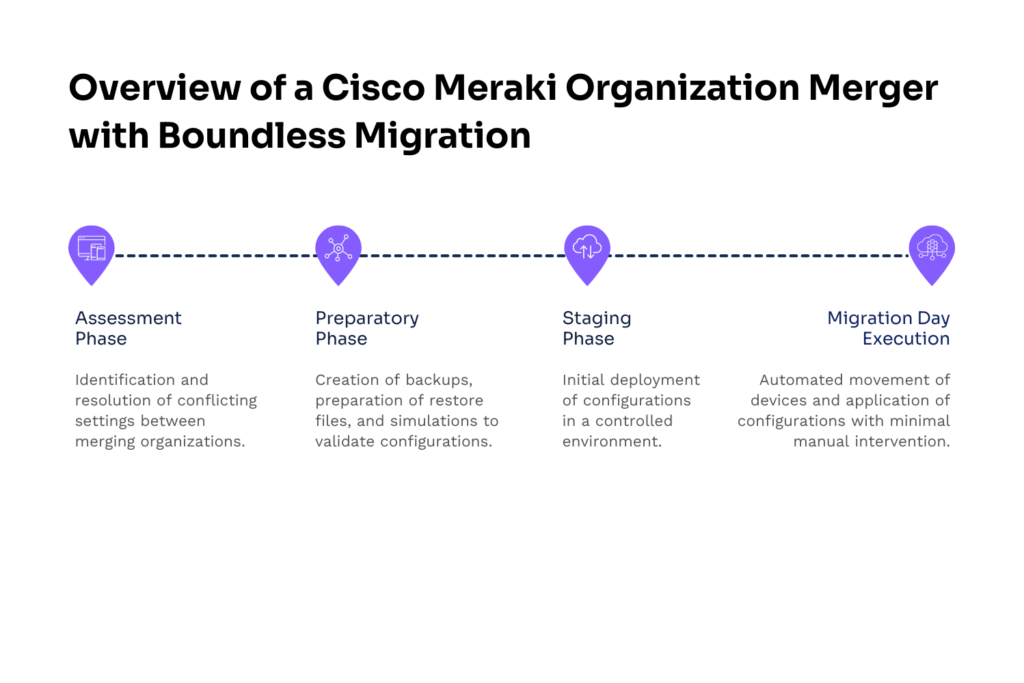Restructuring a Cisco Meraki organizational structure is a complex, yet critical process that companies face during periods of change. These processes can result from mergers and acquisitions, divestitures, or simply the need to optimize network architectures for a more seamless management.
Effective organization migrations require careful planning, precise execution, and often, external expertise to minimize risks and ensure business continuity. Without the right support, these processes can lead to extended downtime, significant operational risks, and increased costs.
This article provides an in-depth look into the complexities of splits and merges, and outlines how the Boundless tailored services and automation solutions can help businesses restructure their Cisco Meraki organizations more efficiently and reliably.
Using the Meraki API, we automate the restoration of critical files and settings that cannot be transferred automatically. This significantly reduces manual work, minimizes errors, and accelerates the restructure of the network infrastructure.
Merging different Cisco Meraki organizations can be technically demanding due to multiple factors:

Boundless Migration offers distinctive approaches to successfully run the split or merger of Cisco Meraki organizations.
Aspect | Organization Splits | Organization Mergers |
|---|---|---|
Definition | Separation of networks and devices within an existing organization into a new organization. | Integration of networks and devices from separate organizations under one existing entity. |
Typical Scenarios | Divestitures, simplification of network management. | Mergers, acquisitions, and network consolidations. |
Key Complexities | Manual recreation of templates, VLAN, or VPN management, amongst others. | Conflicting configurations, manual, reconfigurations, device provisioning, etc. |
Services Provided | Split assessment, backup creation, restore files, automation. | Merge assessment, conflict resolution, backups, restore automation. |
Process Overview | Assessment, preparation, reconfiguration with automation. | Assessment, preparation, staging, migration and reconfiguration with automated setup. |
Timelines | Varies by complexity; automated steps reduce overall downtime. | From staging to execution, automation accelerates timelines. |
Benefits | Reduced errors, minimized downtime. | Faster migrations, reduced manual labor, minimized disruptions, enhanced reliability. |
1207 Delaware Ave #552, Wilmington, Delaware 19806
Americas: +1 (347) 464-6510 - EMEA: +33 (0) 181 22 12 80

We are proud to announce the launch of our new brand identity, marking a significant milestone in our evolution. This rebrand reflects our commitment to continuous innovation, agility, and automation — always moving forward.